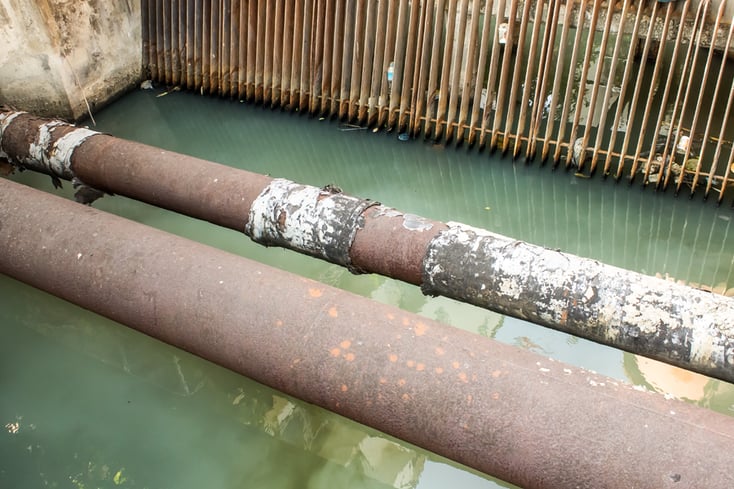Patch, Replace or Redo?
- Home
- Team EJP Blog
- Patch, Replace or Redo?
- Feb 25, 2016 7:13:49 AM
- Everett J. Prescott

When you're faced with a problem in your waterwork's distribution system, either water or sewer, there's always a bit of give and take while you're trying to figure out the best possible solution to the problem. Will a patch work to get the pipe along a little longer? Should it be replaced with more of the same type of pipe? What about replacing that section with a different type of pipe? By knowing what the benefits and limitations are in each scenario, you can make an educated decision about what action to take for the benefit of your organization. Here's the details to help you decide.
When to patch the problem for an effective solution
Patching can be an effective solution for a number of different scenarios. If the pipe is relatively new and in good condition, applying a patch allows you to get many more years of service from that section of pipe. If replacing a section of pipe is going to be too costly or cause too many problems for customers, a patch buys you time and money to come up with a better solutions. If it's 8 AM on New Year's Day and you need an emergency solution, a patch is a great bet (unless, of course, you have our 24/7/365 emergency service on speed dial). The last option where it makes sense to patch is for a section of the distribution system that is scheduled for replacement and just needs to limp along a few more weeks or months before it's replaced entirely.
When to replace with a section of the same pipe type
 But there are times when it's a bad idea to patch. This can include when the pipe is too thin or corroded to form a good seal or that the act of attaching the patch may compromise the line's integrity. At that time, you may want to replace a section of the pipe to ensure that it won't fail shortly in the future. But do you replace it with a different type of pipe or the same kind? For the most part, if you're not otherwise having any other troubles with the pipe material such as failures, corrosion or structural issues and it is still cost effective to install, sticking with the same type of pipe is a great bet, as it will fit relatively seamlessly with the existing materials and supplies on hand.
But there are times when it's a bad idea to patch. This can include when the pipe is too thin or corroded to form a good seal or that the act of attaching the patch may compromise the line's integrity. At that time, you may want to replace a section of the pipe to ensure that it won't fail shortly in the future. But do you replace it with a different type of pipe or the same kind? For the most part, if you're not otherwise having any other troubles with the pipe material such as failures, corrosion or structural issues and it is still cost effective to install, sticking with the same type of pipe is a great bet, as it will fit relatively seamlessly with the existing materials and supplies on hand.
When to redo with a different type of pipe
There are, however, a few situations where redoing the run with a different type of pipe makes much more sense. If you're regularly seeing issues with the pipes in terms of corrosion, structural issues from land settling or traffic, you may want to look at a different type of pipe and fitting material that will hold up better against these issues. One area to keep in mind, however, is the water quality. If you have reason to believe that the pipes or fittings in your distribution system are borderline in terms of chemical and impurity content, you may want to replace them with a different pipe type. With the changes in the lead laws for waterworks and plumbing systems, it's important to plan for the future by changing out borderline pipes and fittings with those that are far superior in numbers to the current lead-free options on the market.
Now that you know what needs to happen in each situation, it's time to act. Keep a few pieces of material on hand for emergencies and Team EJP's emergency contact information close to hand and you'll get through your crisis in no time.








